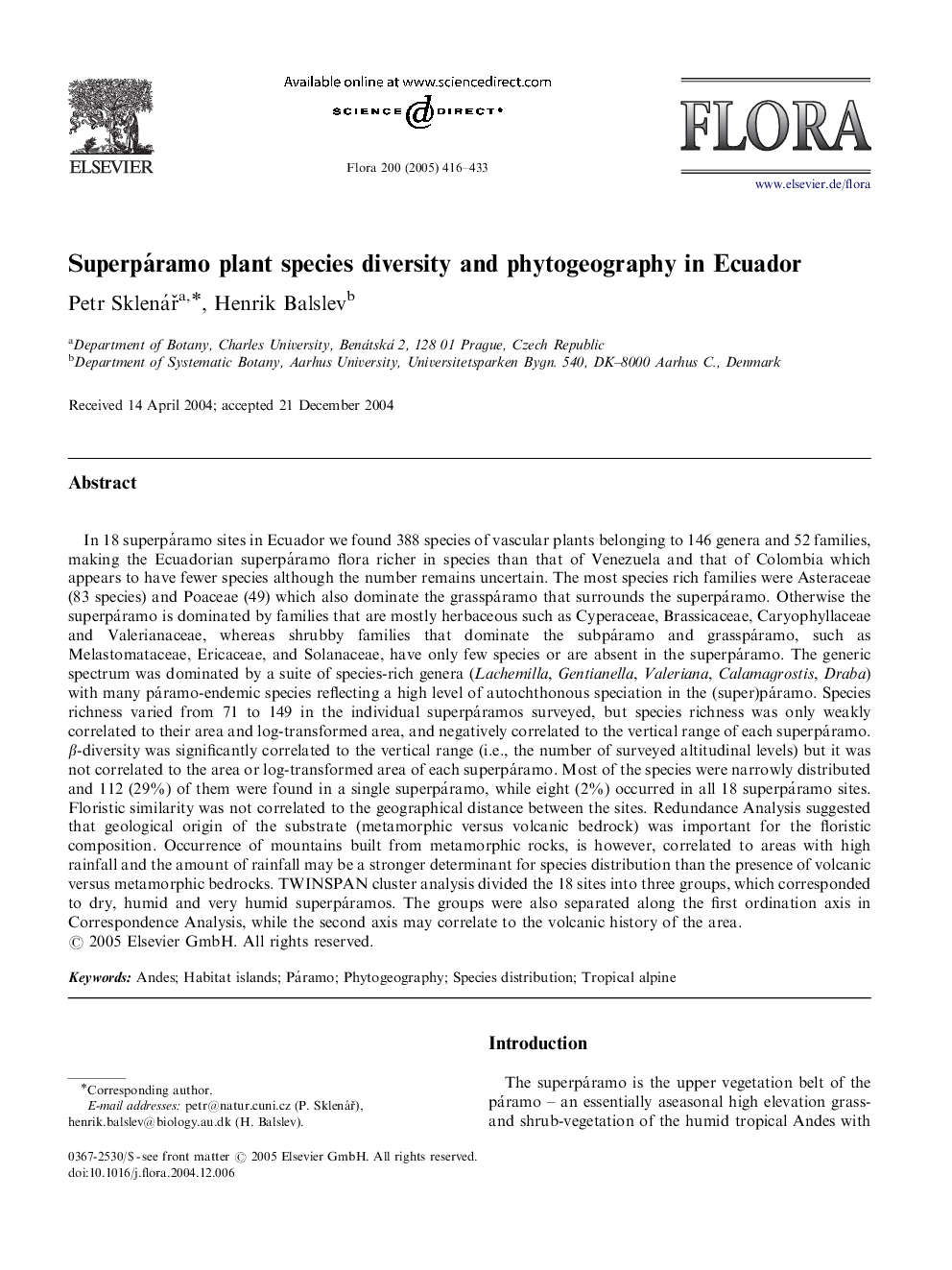| کد مقاله | کد نشریه | سال انتشار | مقاله انگلیسی | نسخه تمام متن |
|---|---|---|---|---|
| 10939245 | 1095140 | 2005 | 18 صفحه PDF | دانلود رایگان |
عنوان انگلیسی مقاله ISI
Superpáramo plant species diversity and phytogeography in Ecuador
دانلود مقاله + سفارش ترجمه
دانلود مقاله ISI انگلیسی
رایگان برای ایرانیان
کلمات کلیدی
موضوعات مرتبط
علوم زیستی و بیوفناوری
علوم کشاورزی و بیولوژیک
بوم شناسی، تکامل، رفتار و سامانه شناسی
پیش نمایش صفحه اول مقاله

چکیده انگلیسی
In 18 superpáramo sites in Ecuador we found 388 species of vascular plants belonging to 146 genera and 52 families, making the Ecuadorian superpáramo flora richer in species than that of Venezuela and that of Colombia which appears to have fewer species although the number remains uncertain. The most species rich families were Asteraceae (83 species) and Poaceae (49) which also dominate the grasspáramo that surrounds the superpáramo. Otherwise the superpáramo is dominated by families that are mostly herbaceous such as Cyperaceae, Brassicaceae, Caryophyllaceae and Valerianaceae, whereas shrubby families that dominate the subpáramo and grasspáramo, such as Melastomataceae, Ericaceae, and Solanaceae, have only few species or are absent in the superpáramo. The generic spectrum was dominated by a suite of species-rich genera (Lachemilla, Gentianella, Valeriana, Calamagrostis, Draba) with many páramo-endemic species reflecting a high level of autochthonous speciation in the (super)páramo. Species richness varied from 71 to 149 in the individual superpáramos surveyed, but species richness was only weakly correlated to their area and log-transformed area, and negatively correlated to the vertical range of each superpáramo. β-diversity was significantly correlated to the vertical range (i.e., the number of surveyed altitudinal levels) but it was not correlated to the area or log-transformed area of each superpáramo. Most of the species were narrowly distributed and 112 (29%) of them were found in a single superpáramo, while eight (2%) occurred in all 18 superpáramo sites. Floristic similarity was not correlated to the geographical distance between the sites. Redundance Analysis suggested that geological origin of the substrate (metamorphic versus volcanic bedrock) was important for the floristic composition. Occurrence of mountains built from metamorphic rocks, is however, correlated to areas with high rainfall and the amount of rainfall may be a stronger determinant for species distribution than the presence of volcanic versus metamorphic bedrocks. TWINSPAN cluster analysis divided the 18 sites into three groups, which corresponded to dry, humid and very humid superpáramos. The groups were also separated along the first ordination axis in Correspondence Analysis, while the second axis may correlate to the volcanic history of the area.
ناشر
Database: Elsevier - ScienceDirect (ساینس دایرکت)
Journal: Flora - Morphology, Distribution, Functional Ecology of Plants - Volume 200, Issue 5, 6 September 2005, Pages 416-433
Journal: Flora - Morphology, Distribution, Functional Ecology of Plants - Volume 200, Issue 5, 6 September 2005, Pages 416-433
نویسندگان
Petr SklenáÅ, Henrik Balslev,